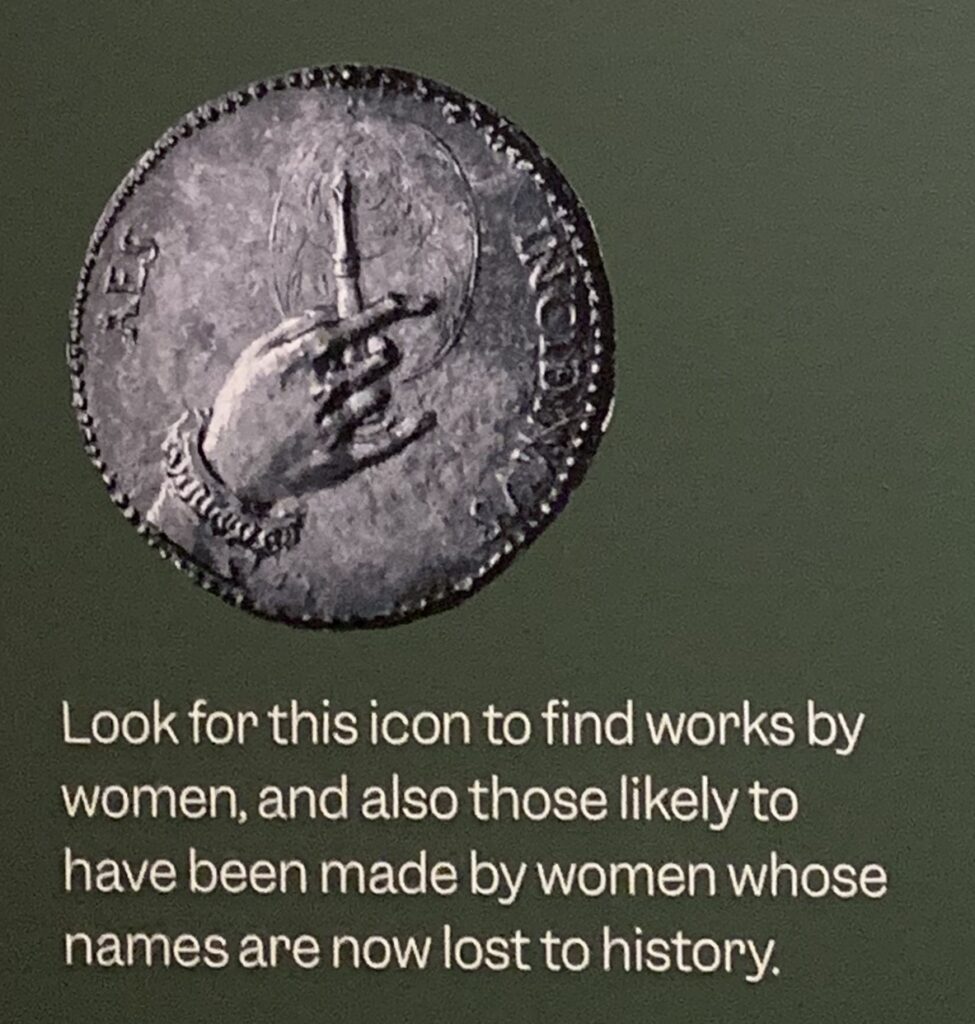The Museum of Fine Arts in Boston has added a lecture series to compliment the exhibit “Strong Women in Renaissance Italy”.
Six unique themes mine for “Hidden Gold” with a multi-media opportunity that explores the lives of Italian women from the 14th to early17th century. On consecutive Wednesdays, the Remis Auditorium becomes a virtual villaggio. (village) Art, music, and prose celebrate the cultural contributions of women of the Renaissance. More than atmospheric, the lectures demonstrate generational manifestations of agency, creativity, intellect and power.
A few steps away from the Auditorium guests are transported to an arch-filled space, evocative of an inviting dimora.(mansion) Galleries of harvest gold, dedicated to understanding Strong Women feature cross-disciplinary interpretations of the Renaissance. Expressions by artisans, courtesans, educators, mothers, warriors and keepers-of-the-faith fuse to ignite a story of enlightened times.

*Photography @Museum of Fine Arts, Boston
Although different, each artifact was designed as a means of expressing Italian exceptionalism. Experienced as an ensemble, the intonation of “Strong Women” is operatic. The exhibit and lectures are collaborative, dramatic, and of exquisite caliber.
Sarah Gwyneth Ross, professor of History at Boston College was the first speaker in the lectures series. Her presence was lyrical as she fan-girled icons of Italian Renaissance. Dr.Ross set the stage for a heady mix of metaphor and mastery of historic relevance. She spoke for an hour of women who held parity with men of their time, explaining the elegance of the era when women were immersed in a network of humanities.
A stand-out feature of Dr. Ross’ lecture was an explanation of a Cremonese engraving. In today’s vernacular this “selfie” is of 26 year old, Sofonisba Anguissola. The original painting was intended as a tribute to Sofonisba’s father. However, this pretty-young-thing was also introducing herself, in this Facebook worthy profile-pic, as a virtuous virtuoso of the arts. Not quite on the level of a Kardashian, Sofonisba was a pop-cultural influencer of the Renaissance, encouraging others to embrace a life of total refinement.

Sofonisba Anguissola, Self-Portrait, about 1556 *Lois B.and Michael K. Torf Gallery *Photography @Museum of Fine Arts, Boston
Central to Dr. Ross’ thesis was an appreciation of how essential it was for women to elevate their collective consciousness, and contribute broadly to a life of civility. The importance of investing in women was understood as a generational investment in the common-wealth of Italy.
Although many exhibits are credited to women many more are unnamed. The MFA acknowledges the custom of overlooking attribution of art created by females with a designation that suggests the object was most likely created by a woman.

Without attribution, guests of the exhibition metaphorically “mine for gold” that celebrates Women in Renaissance Italy who expressed the best of their culture with intellect, talent and strength.

Dr. Sarah Gwyneth Ross and her bella mama @MFA
MFA’s mobile audio-tour, available on Bloomberg Connects, is a free companion galley guide. By downloading the QR-Code at the galley entrance, curators, conservators and scholars share insights about the remarkable women who’s art was an expression of their role in society.
Upcoming Lectures:
9/27/ 2023~Seeking Women’s Stories in the MFA’ Collections
10/4/2023~The Art of Family Life
10/11/2023~Italy’s First Woman of Letters : Vittoria Colonna
10/18/2023~Passionately Unconventional: Music by Women
10/25/2023~Community and Culture in Florentine Convents
“Strong Women” Dust Jacket *Cover Image ~Lorenzo Costa, Portrait of a Woman with a Pearl Necklace, probably 1485-95 /oil on canvas, Bequest of Mrs. Thomas O. Richardson
![]()
![]()
Discover more from She The People News explores the world of business, culture and politics from a woman’s point of view.
Subscribe to get the latest posts sent to your email.

